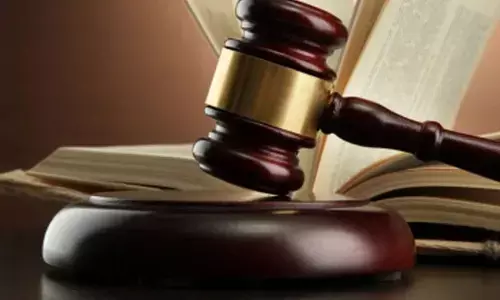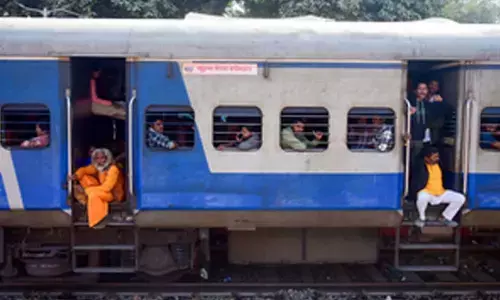Sans creativity, it's all same patterns

The world in which we live today is dynamic and fast paced. Keeping abreast of happenings in the ambient environment is akin to running on a treadmill
The world in which we live today is dynamic and fast paced. Keeping abreast of happenings in the ambient environment is akin to running on a treadmill. As the Red Queen says to Alice in Lewis Carroll's 'Through the Looking Glass,' "It takes all the running you can do, to keep in the same place." While it is quite understandable, and to be expected, that areas such as history, politics, or economics, must remain in a state of constant flux, one cannot help being bewildered by the violent changes that are occurring in today's world in established disciplines, such as chemistry and engineering. The revolution in digital technology and the fiercely competitive market force are demanding greater creativity and innovation in terms of products and services. Together, they have created a situation in which changes are taking place at a rate with which it is practically impossible to keep pace.
Creativity is about original thought and knowledge leading to the unleashing of the potential to generate ideas. Innovation, in its turn, converts the resultant ideas into viable solutions together, they constitute a powerful instrument to create the next generation of ideas, so important in the contemporary world. An instrument so powerful, indeed, that it can help one crack the toughest of problems through the adoption of novel approaches that can lead to a variety of solutions. It is most effective in exploring out-of-the-box approaches to cracking problems otherwise defying solution. The beauty of these approaches is that they can be used for generating ideas in a variety of fields, from a scientific theory, or a musical composition to a printed book, painting or even a humorous joke.
Creativity finds significant use also in the area of agriculture extension – the process through which results of research in agriculture, conducted in laboratories, by scientists, are passed on to the farming community for improving the performance of crops, animals and plantations through using their imagination and ability to convey to the farming community the results of research conducted in laboratories
It was the famous French architect Le Corbusier, who planned the city of Chandigarh, the dream city of India's first Prime Minister Jawaharlal Nehru. Another well-known architect, Frank Lloyd Wright was responsible for the design of the Guggenheim museum in New York.
Among all the fine arts, the one which is most easily appreciated by everyone is music. So common is the ability to appreciate music that Shakespeare went to the extent of saying, "the man that has no music in himself, ……" Creativity in the field of music is often displayed by the ability to combine existing musical knowledge in new ways, thus producing original and appealing outcomes. Studies have, in fact, suggested that listening to what is known as 'happy music' promotes divergent thinking. The legendary vocal artist Balamuralikrishna was known for this rare ability. Through his nonconformist spirit of experimentation an unending quest for new frontiers, he created new ragas such as Ganapathi, Sarvasri, etc.
In more recent times, one has also seen classic products in design, architecture, and the media including movies and the electronic media, such as the television and the radio. Creative thought is also the need of the hour in today's corporate world, and industrial houses are scouring the horizon to fill their ranks with persons with that gift.
One generally finds that creative persons, though very energetic, intermittently experience strange spells of absolute inactivity. Also, in a most perplexing manner, they can tend to be both clever as well as extremely naive. They often display a confusing tendency, to be both playful and responsible, while also being extremely disciplined and focused. Their thinking is, at once, rich in the realm of imagination and fantasy, while remaining firmly rooted in a solid foundation of reality. As a result of all these contradictions in terms, they are capable of experiencing great joy and excitement from simple pursuits, while also possessing a very low threshold for suffering and pain. Their work can express a vast range of human emotions, from the most tender and delicate, to the extremely violent and ecstatic. The legendary works of Leonardo da Vinci, Michelangelo, Shakespeare and Mozart are only some examples of such a rare breed of extraordinarily creative personalities.
Fortunately, the gift of creativity is not confined to artists and scientific geniuses alone. Studies have shown that all persons have the ability to come up with original ideas through what is called 'divergent, thinking'. They also possess the capacity to select that one idea which is most likely to succeed, through what is called 'convergent thinking.'
One genre of creative thinking, that has revolutionised many areas, including science, is 'thought experiments'. Used by many great thinkers, they enable one to delve into otherwise inscrutable mysteries, and lead to the ability to anticipate, and, consequently, prevent, undesirable situations before they can cause problems. The idea is to encourage speculation, logical, thinking, and change paradigms. They push one out of the comfort zone and force one to confront questions not easily answered.
While sharpening the outlines of gaps in knowledge, they can extend the limits of existing wisdom. A classic example of this category is the legendary paradox, through which the famous Greek philosopher, and mathematician, Zeno, showed, through a series of steps, that, theoretically speaking, motion is impossible! In a similar manner, the French philosopher, and mathematician, Descartes, propounded a theory that doubted existence of everything until there was nothing left to doubt, a theory known as 'a brain in a vat'. In a very much similar vein, Galileo, the famous astronomer, showed in the 17th century that mass does not influence acceleration, through a thought experiment involving a heavy and light ball being thrown down from the top of the leaning tower of Pisa. The concept of a thought experiment was also put to imaginative use by the legendary Albert Einstein, who created an imaginary situation famously called the 'twin paradox.' One of two twins makes a journey into space in a high-speed rocket and returns home to find that the other one who remained on earth has aged more than him, on account of a phenomenon, called 'time dilation' caused by the impact of acceleration on space time.
A product of creativity or innovation must, necessarily, possess a trace of the unusual. Like Einstein's theory of relativity. It cannot be expected to appeal to the common person's taste. As the irrepressible Picasso said, "the chief enemy of creativity is good sense!"
(The writer is formerly
Chief Secretary, Government
of Andhra Pradesh)

















